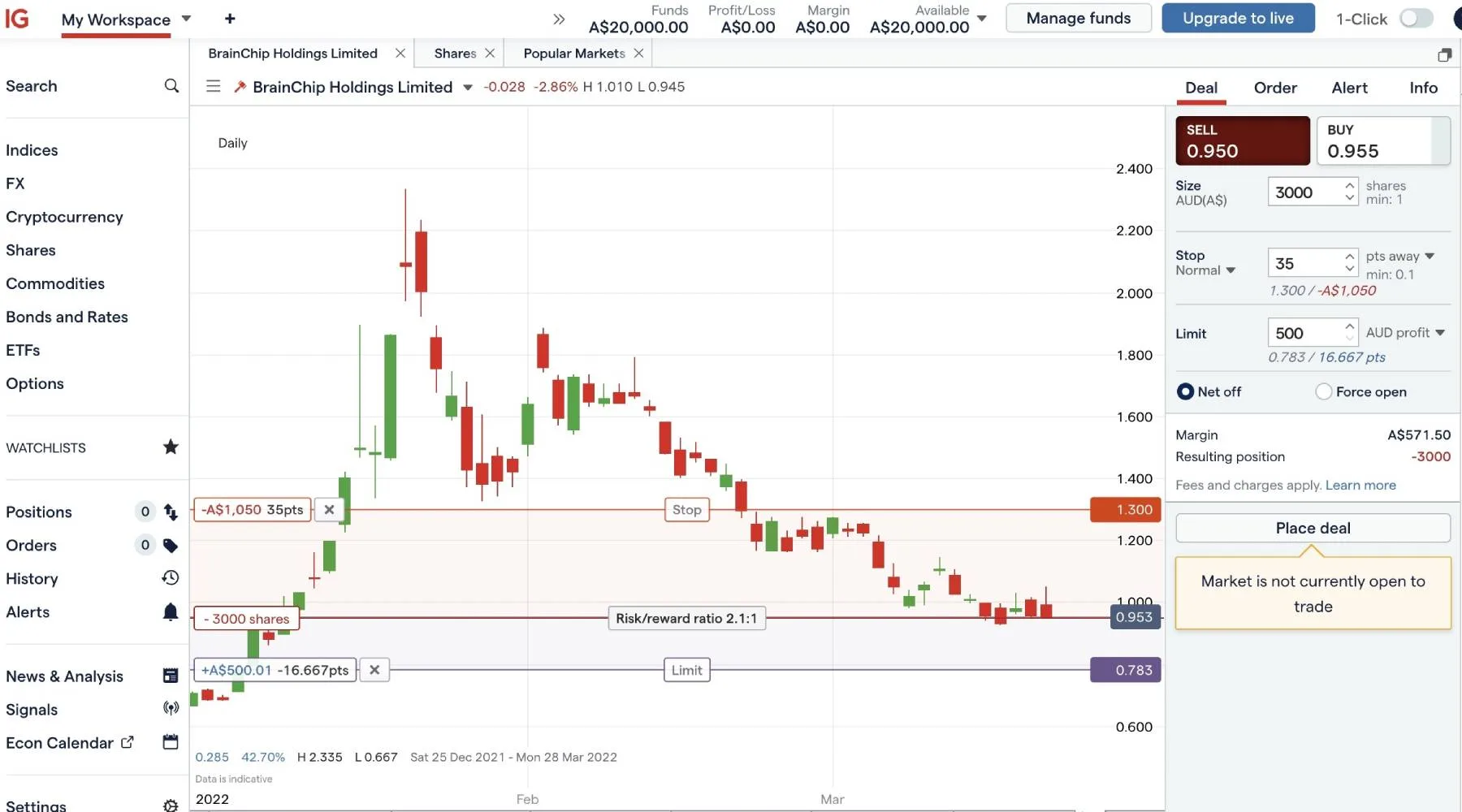How to protect your portfolio in times of volatility

Investing through volatile markets can be incredibly challenging for even the most experienced investors, but with the right strategy, investors can protect their portfolio.
 Sponsored by IG Australia Pty Ltd (AFSL 515106). Trade CFDs 24 hours a day to take advantage of both rising and falling prices. Or open a share trading account to trade $0 commission shares. Other fees and charges apply.
Sponsored by IG Australia Pty Ltd (AFSL 515106). Trade CFDs 24 hours a day to take advantage of both rising and falling prices. Or open a share trading account to trade $0 commission shares. Other fees and charges apply.

Sponsored by IG Australia Pty Ltd (AFSL 515106). Trade CFDs 24 hours a day to take advantage of both rising and falling prices. Or open a share trading account to trade $0 commission shares. Other fees and charges apply.
Coming off two straight years of market swings led by COVID-19, most investors would be hoping for a smoother 2022. But, unfortunately, the combination of inflation, geopolitical conflicts and the threat of slowing economic growth, has led to increased volatility in the markets.
Instead of waiting for the headwinds of the market to disappear, what can investors do to protect themselves from volatile movements while still keeping their portfolio intact?
One answer is hedging.
As Dan Herriotts, Head of Dealing at IG says: "Hedging is an appropriate tool for any investor, depending on the circumstances. Hedging helps iron out uncertainty in a portfolio, especially in times of higher volatility."

What is a hedging strategy?
A hedge acts in a similar way to insurance. The idea is to limit risk, which can be done by taking a position in instruments that offset potential losses from your current positions.
"There will be trading fees within this strategy," but that's the price to potentially protect your portfolio in the short-term", Herriots explains.
"When it comes to retail investors, this peace of mind can be very important, especially if your investment horizon is a bit longer."
There are a number of ways you can hedge a portfolio. Perhaps the simplest form of hedging is diversification. Putting all your eggs in one correlated asset basket adds undue risk to a portfolio. Instead, it is best to have assets in different classes including commodities, shares, property, cash, bonds, forex and even crypto currencies.
How can you use CFDs as a hedging strategy?
Another popular way of hedging is through the use of Contracts For Difference (CFDs), which allow traders to take advantage of volatile markets by going long or short to protect the value of a share portfolio.
"As we have seen over the last 2 years the markets can be subject to sharp price movements, hedging offers the ability to reduce risk and, ideally, stress less about an investment, using CFD's is one strategy investors may use to do this" Herriotts continues.
There are also a number of more sophisticated strategies that involve more technical approaches and a broker that has the tools to enable them. These include long put positions, collars, fence or covered calls.
You can learn more about how these work using IG's free Trading Skills online tutorials.
How does a CFD work?
CFDs are derivative investment products that mirror the performance of an asset. For instance, with share CFDs - while you might not own the actual stock, the CFD price will generally correspond to that of the actual stock. CFDs are also available across a range of asset classes including commodities, shares, cryptocurrency and forex pairs.
CFDs allow traders to take positions on the price movements of assets - long or short - and do so with leverage or borrowed funds.

Take for example, a situation where an investor has spent some time building a portfolio that they want to hold but is worried about short-term losses due to inflation in a post COVID-19 world. Or perhaps an investor has enjoyed great returns from the boom of the past two years but has realised they might lose all their gains in the very near future but have a positive long term view.
Instead of selling the portfolio and putting the money into assets such as gold, bonds or even a savings account, an investor can protect their money through CFDs.
By purchasing a CFD, they can short (speculate against) individual shares or the market as a whole and benefit from the falling price. In this instance, the investor's portfolio, which will fall in value, will be protected by the CFDs which will rise in value.
This allows the investor to hold onto their own assets as well as protect them from negative price moves.

Pros and cons of a CFD trading strategy
CFDs can be a useful and beneficial method of protecting a portfolio. But, as with all financial products, they come with pros and cons.
Potential upside of this approach - pros
Downside protection. The most obvious pro when using CFDs is the ability to protect your wealth over the short-term by shorting your portfolio. This may be done by shorting an individual share, an ETF or if the portfolio closely aligns with a single index trade.
Lower transaction fees. Transaction fees for CFDs with brokers including IG, are lower than buying an entire basket of shares through an ETF.
Can lock in a portfolio's value. Even though portfolios will often change in value, an investor can lock in their portfolio's value through CFDs.
The 'sleep at night' factor. Using CFDs to protect a portfolio can help investors stay in the market during difficult times, allowing them to benefit over the longer term.
Downside of this approach - cons
Hard to be perfectly hedged. Unfortunately, it's not easy to remain perfectly hedged. An investor would have to constantly update their portfolio if they want to remain so, constantly reflecting the change in price of the underlying asset. While the range of markets available on CFD's does let the investor tailor the hedge accordingly, for example, a way of hedging a portfolio consisting of ASX 200 shares may be to take a short position in the Australia 200 index.
How to manage risk?
Investing always involves risks.
Any investor, either beginner or professional, should prioritise risk management during their decision-making process.
As IG's market analyst Hebe Chen puts it, "Risk management is an evolving and individualised thing. At any stage, whether to hedge or not should be a question an investor asks themselves. Perhaps with help from a licensed professional."
While CFDs can help investors to protect their portfolio, they have risks too.
As outlined in Finder's summary of revised Australian leverage trading limits, CFDs carry risk in the same way that any financial product carries risk – if the market moves against your position (for example, goes up when your position is based on it going down), you can still lose money. The risks associated with CFDs can be greater as they are leveraged products.
CFDs can be traded on broker platforms like IG, which has a free series of risk management tutorials and offers a free demo account with $20k worth of virtual funds to use as you practice new strategies and get used to investing with CFDs.

Summary
CFDs aren't for everyone. But for those who want to use them, they can greatly offset their risk in a volatile market. Through an effective use of CFDs, an investor can protect their portfolio through turbulent times; offsetting many of the risks the market is currently facing.
Start trading with IG
Compare other CFD trading platforms here


